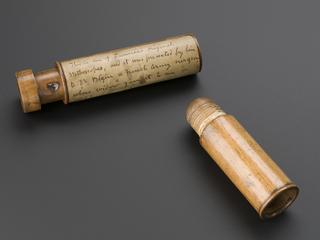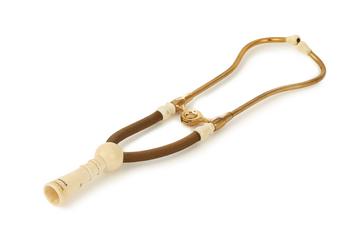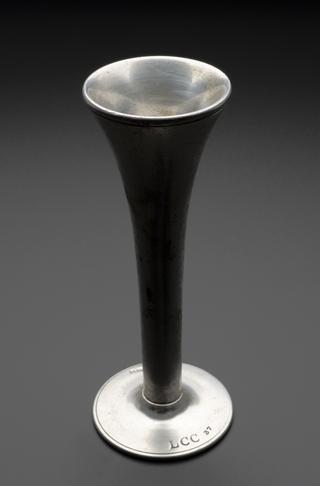
Hill and Barnard sphygmomanometer, London, England, 1886-1896
- maker:
- James Joseph Hicks

Hill and Barnard sphygmomanometer, by James Joseph Hicks, 8-10 Hatton Garden, London, England, 1886-1896, in leatherette case.
The original sphygmomanometer was devised by Samuel Von Basch (1837-1905) in 1881. It measured blood pressure by slowly applying a measured force to the skin over an artery until the pulse disappeared. This example is a variation known as a Hill and Barnard sphygmomanometer. It is named after its designers Dr Leonard Hill (1866-1952), a British physiologist, and Harold Barnard (1868-1908), a British surgeon. Measuring blood pressure as a health check only became common practice from the 1920s.
Details
- Category:
- Clinical Diagnosis
- Collection:
- Sir Henry Wellcome's Museum Collection
- Object Number:
- A600276
- Materials:
- case, leather, instrument, glass, instrument, metal and tube, glass
- Measurements:
-
overall: 33 mm x 155 mm x 49 mm, .1kg
- type:
- sphygmomanometer




